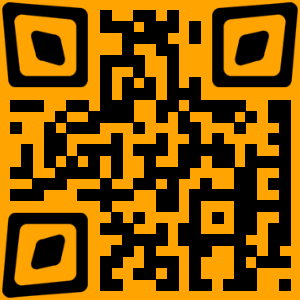How to order HID Prox Compatible Card2019-06-24
NubianRFID Supported 125KHz HID Prox Credentials
When ordering HID cards, there are four pieces of information NubianRFID needs to process the order. They are:
1) part number, 2) format, 3) facility code, and 4) number range.
With each card order, HID takes unprogrammed cards and programs
them with a specific HID format that includes a facility code and card
number.
Even if your customer does not need a specific format, facility code or number range,
your order to NubianRFID must include this information. Situations where your customer
requests a Corporate 1000 format or an HID proprietary format are exceptions.

1. what's the part number of different HID Credentials?
HID card part numbers are derived from the How To Order Guide for each HID card base model number. Typical base model numbers are 1326 (ProxCard II clamshell card) and 1386 (ISOProx II printable card). The digits following the base model number represent programming (whether the card is to be programmed by HID – most are), front packaging (what appears on the front of the card), back packaging (what appears on the back of the card), card numbering and slot punch.

Part Number 1326 L G S M V
| | | | | |
- 1326 Clamshell Card | | | | |
- 1336 CR80 Standard PVC with Magentic strip card | | | | |
- 1536 CR80 Composite 40% Polyester/PVC with Magentic strip card | | | | |
- 1386 CR80 Standard PVC card | | | | |
- 1586 CR80 Composite 40% Polyester/PVC card | | | | |
- 1346 Key fob | | | | |
- 1391 Tag Sticker | | | | |
| | | | |
Programming _____ ______________ _________________________________________| | | | |
- L - Programmed, Low Frequency (125 kHz). Specify Programming Information. | | | |
- N - Non-Programmed, Low Frequency (125 kHz). Programming Information Not Required | | | |
| | | |
Front Packaging ______________________ ____________________________________| | | |
- G - Plain White PVC w/ Gloss Finish | | |
- C - Custom Artwork w/ Gloss Finish – Specify Custom Artwork Number | | |
| | |
Back Packaging____________ _________________________________________________ | | |
- G - Plain White PVC w/ Gloss Finish | |
- S - Standard DuoProx II Artwork Gloss Finish | |
- C - Custom Artwork w/ Gloss Finish – Specify Custom Artwork Number | |
Card Numbering ____________ _________________________________________________________________| |
- M - Sequential Matching Internal/External (Inkjetted) |
- N - No External Card Numbering |
- S - Sequential Internal/Sequential Non-Matching External (Inkjetted) |
- R - Random Internal/Non-Matching Sequential External (Inkjetted) |
- A - Sequential Matching Internal/External (Engraved) |
- B - Sequential Internal/Sequential Non-Matching External (Engraved) |
- C - Random Internal/Non-Matching Sequential External (Engraved) |
Slot Punch ________________________________________________________ _|
- N - No Slot Punch (Printed location of vertical and horizontal slot punch will remain)
- V - Vertical Slot Punch (Printed location of horizontal slot punch will remain)
- H - Horizontal Slot Punch (Printed location of vertical slot punch will remain)
2. What's the RFID Format you order?
The format is the structure of the data stored in an access control card. Formats represent a specific number of bits and a specific way those bits are programmed on the card. The most common HID format is H10301. This is HID’s standard 26-bit format. Technically, there can be many 26-bit formats because 26 bits can be programmed on a card in many different ways. Therefore, format numbers are assigned to each HID format. HID has Corporate 1000 formats for large end-users, HID proprietary formats for dealers/integrators and end-users and a substantial number of formats for access control system OEMs.
Check the label on the box and choice the correct Format.
3.Facility Code
The term “facility code”, sometimes called “site code”, can be misleading in today’s access control world. It does not need to refer to a specific facility or site, but it can if that is how the end user wants to use it. There are two pieces of access control information on a card. They are the facility code and card number. The facility code is simply a second identifying number on the card, and each card order must include a facility code. The facility code is used to provide a second level of security within the card database. Card number 10,000 with facility code 34 is a different card than card number 10,000 with facility code 96. The facility code increases the number of card combinations within an access control system, reducing the possibility of duplicate cards. Many access control systems allow multiple facility codes within the same cardholder database.4. Number Range
Each HID card has an individual card number. This is the number used by the access control system database to identify a person. The number range is the set of individual card numbers needed on the order.




























